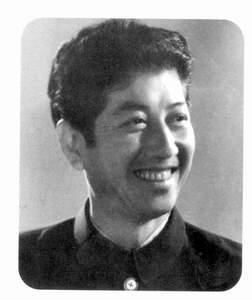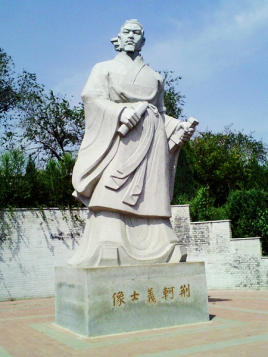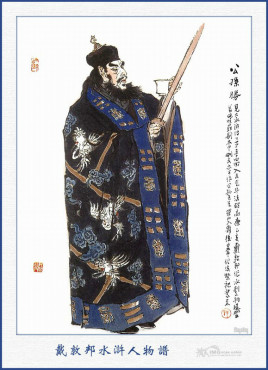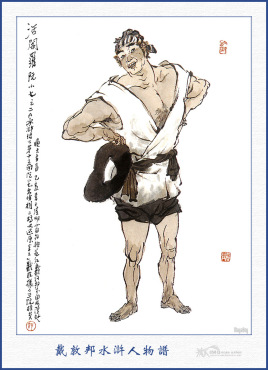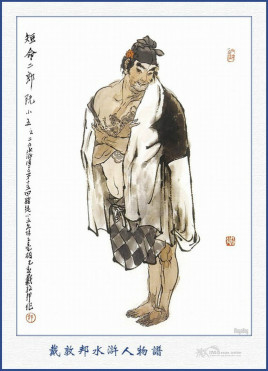欧拉是不是数学家
1、莱昂哈德·欧拉(LeonhardEuler,1707年4月5日~1783年9月18日)是瑞士数学家和物理学家。他被一些数学史学者称为历史上最伟大的两位数学家之一(另一位是卡尔·弗里德里克·高斯)。欧拉是第一个使用“函数”一词来描述包含各种参数的表达式的人,例如:y=F(x)(函数的定义由莱布尼兹在1694年给出)。他是把微积分应用于物理学的先驱者之一。
2、欧拉1707年4月15日出生于瑞士,在那里受教育。他一生大部分时间在俄罗斯帝国和普鲁士度过。欧拉是一位数学神童.他作为数学教授,先后任教于圣彼得堡和柏林,尔后再返圣彼得堡。欧拉是有史以来最多遗产的数学家,他的全集共计75卷。欧拉实际上支配了18世纪的数学,对于当时的新发明微积分,他推导出了很多结果。在他生命的最后7年中,欧拉的双目完全失明,尽管如此,他还是以惊人的速度产出了生平一半的著作。
更多关于欧拉是不是数学家,进入:查看更多内容
数学家欧拉简介
莱昂哈德·欧拉Leonhard Euler 1707年4月5日~1783年9月18日 是瑞士数学家和物理学家。他被称为历史上最伟大的两位数学家之一(另一位是卡尔·弗里德里克·高斯)。欧拉是第一个使用“函数”一词来描述包含各种参数的表达式的人,例如:y = F(x) (函数的定义由莱布尼兹在1694年给出)。他是把微积分应用于物理学的先驱者之一。"欧拉进行计算看起来毫不费劲儿,就像人进行呼吸,像鹰在风中盘旋一样°(阿拉戈语),这封伦纳德.欧拉(1707--1783)无与伦比的数学才能来说并不夸张,他是历史上最多产的数学家。与他同时代的人们称他为"分析的化身"。欧拉撰写长篇学术论文就像一个文思敏捷的作家给亲密的朋友写一封信那样容易。甚至在他生命最后17年间的完全失明也未能阻止他的无比多产,如果说视力的丧失有什么影响的话,那倒是提高了他在内心世界进行思维的想像力。�0�2
欧拉到底为了多少著作,直至1936年人们也没有确切的了解。但据估计,要出版已经搜集到的欧拉著作,将需用大4开本60至80卷。1909年瑞士自然科学联合会曾着手搜集、出版欧拉散轶的学术论文。这项工作是在全世界许多个人和数学团体的资助之下进行的。这也恰恰显示出,欧拉属于整个文明世界,而不仅仅屈于瑞士。为这项工作仔细编制的预算(1909年的钱币约合80000美元)却又由于在圣彼得堡(列宁格勒)意外地发现大量欧拉手稿而被完全打破了。
欧拉和丹尼尔·伯努利一起,建立了弹性体的力矩定律:作用在弹性细长杆上的力矩正比于物质的弹性和通过质心轴和垂直于两者的截面的惯性动量。�0�2
他还直接从牛顿运动定律出发,建立了流体力学里的欧拉方程。这些方程组在形式上等价于粘度为0的纳维-斯托克斯方程。人们对这些方程的主要兴趣在于它们能被用来研究冲击波。�0�2
他对微分方程理论作出了重要贡献。他还是欧拉近似法的创始人,这些计算法被用于计算力学中。此中最有名的被称为欧拉方法。�0�2
在数论里他引入了欧拉函数。�0�2
自然数的欧拉函数被定义为小于并且与互质的自然数的个数。例如,,因为有四个自然数1,3,5和7与8互质。�0�2
在计算机领域中广泛使用的RSA公钥密码算法也正是以欧拉函数为基础的。�0�2
在分析领域,是欧拉综合了莱布尼兹的微分与牛顿的流数。�0�2
他在1735年由于解决了长期悬而未决的贝塞尔问题而获得名声:�0�2
:其中是黎曼函数。�0�2
欧拉将虚数的幂定义为如下公式:这就是欧拉公式,它成为指数函数的中心。�0�2
在初等分析中,从本质上来说,要么是指数函数的变种,要么是多项式,两者必居其一。被理查德·费曼称为“最卓越的数学公'”的则是欧拉公式的一个简单推论(通常被称为欧拉恒等式):�0�2
:在1735年,他定义了微分方程中有用的欧拉-马歇罗尼常数:�0�2
:他是欧拉-马歇罗尼公式的发现者之一,这一公式在计算难于计算的积分、求和与级数的时候极为有效。�0�2
在1739年,欧拉写下了《音乐新理论的尝试(Tentamennovaetheoriaemusicae)》,书中试图把数学和音乐结合起来。�0�2
一位传记作家写道:这是一部"为精通数学的音乐家和精通音乐的数学家而写的"著作。�0�2
在经济学方面,欧拉证明,如果产品的每个要素正好用于支付它自身的边际产量,在规模报酬不变的情形下,总收入和产出将完全耗尽。�0�2
在几何学和代数拓扑学方面,欧拉公式给出了单联通多面体的边、顶点和-(zh-hans:面;zh-hant:面)-之间存在的关系::�0�2
其中,F为给定多面体的面数之和,E为边数之和,V为顶点数之和。�0�2
这个定理也可用于平面图。对非平面图,欧拉公式可以推广为:如果一个图可以被嵌入一个流形,则::其中χ为此流形的欧拉特征值,在流形的连续变形下是不变量。�0�2
单联通流形,例如球面或平面,的欧拉特征值是2。�0�2
对任意的平面图,欧拉公式可以推广为:,其中为图中连通分支数。�0�2
在1736年,欧拉解决了柯尼斯堡七桥问题,并且发表了论文《关于位置几何问题的解法(Solutioproblematisadgeometriamsituspertinentis)》,对一笔画问题进行了阐述,是最早运用图论和拓扑学的典范。�0�2
数独是欧拉发明的拉丁方块的概念,在当时并不流行,直到20世纪由平凡日本上班族锻治真起,带起流行
数学家欧拉生平及贡献简介(中英文对照版)
欧拉1707年出生在瑞士的巴塞尔(Basel)城,13岁就进巴塞尔大学读书,得到当时最有名的数学家约翰·伯努利(Johann Bernoulli,1667-1748年)的精心指导.
欧拉渊博的知识,无穷无尽的创作精力和空前丰富的著作,都是令人惊叹不已的!他从19岁开始发表论文,直到76岁,半个多世纪写下了浩如烟海的书籍和论文.到今几乎每一个数学领域都可以看到欧拉的名字,从初等几何的欧拉线,多面体的欧拉定理,立体解析几何的欧拉变换公式,四次方程的欧拉解法到数论中的欧拉函数,微分方程的欧拉方程,级数论的欧拉常数,变分学的欧拉方程,复变函数的欧拉公式等等,数也数不清.他对数学分析的贡献更独具匠心,《无穷小分析引论》一书便是他划时代的代表作,当时数学家们称他为"分析学的化身".
欧拉是科学史上最多产的一位杰出的数学家,据统计他那不倦的一生,共写下了886本书籍和论文,其中分析、代数、数论占40%,几何占18%,物理和力学占28%,天文学占11%,弹道学、航海学、建筑学等占3%,彼得堡科学院为了整理他的著作,足足忙碌了四十七年.
欧拉著作的惊人多产并不是偶然的,他可以在任何不良的环境中工作,他常常抱着孩子在膝上完成论文,也不顾孩子在旁边喧哗.他那顽强的毅力和孜孜不倦的治学精神,使他在双目失明以后,也没有停止对数学的研究,在失明后的17年间,他还口述了几本书和400篇左右的论文.19世纪伟大数学家高斯(Gauss,1777-1855年)曾说:"研究欧拉的著作永远是了解数学的最好方法."
欧拉的父亲保罗·欧拉(Paul Euler)也是一个数学家,原希望小欧拉学神学,同时教他一点教学.由于小欧拉的才人和异常勤奋的精神,又受到约翰·伯努利的赏识和特殊指导,当他在19岁时写了一篇关于船桅的论文,获得巴黎科学院的奖的奖金后,他的父亲就不再反对他攻读数学了.
1725年约翰·伯努利的儿子丹尼尔·伯努利赴俄国,并向沙皇喀德林一世推荐了欧拉,这样,在1727年5月17日欧拉来到了彼得堡.1733年,年仅26岁的欧拉担任了彼得堡科学院数学教授.1735年,欧拉解决了一个天文学的难题(计算慧星轨道),这个问题经几个著名数学家几个月的努力才得到解决,而欧拉却用自己发明的方法,三天便完成了.然而过度的工作使他得了眼病,并且不幸右眼失明了,这时他才28岁.1741年欧拉应普鲁士彼德烈大帝的邀请,到柏林担任科学院物理数学所所长,直到1766年,后来在沙皇喀德林二世的诚恳敦聘下重回彼得堡,不料没有多久,左眼视力衰退,最后完全失明.不幸的事情接踵而来,1771年彼得堡的大火灾殃及欧拉住宅,带病而失明的64岁的欧拉被围困在大火中,虽然他被别人从火海中救了出来,但他的书房和大量研究成果全部化为灰烬了.
沉重的打击,仍然没有使欧拉倒下,他发誓要把损失夺回来.在他完全失明之前,还能朦胧地看见东西,他抓紧这最后的时刻,在一块大黑板上疾书他发现的公式,然后口述其内容,由他的学生特别是大儿子A·欧拉(数学家和物理学家)笔录.欧拉完全失明以后,仍然以惊人的毅力与黑暗搏斗,凭着记忆和心算进行研究,直到逝世,竟达17年之久.
欧拉的记忆力和心算能力是罕见的,他能够复述年青时代笔记的内容,心算并不限于简单的运算,高等数学一样可以用心算去完成.有一个例子足以说明他的本领,欧拉的两个学生把一个复杂的收敛级数的17项加起来,算到第50位数字,两人相差一个单位,欧拉为了确定究竟谁对,用心算进行全部运算,最后把错误找了出来.欧拉在失明的17年中;还解决了使牛顿头痛的月离问题和很多复杂的分析问题.
欧拉的风格是很高的,拉格朗日是稍后于欧拉的大数学家,从19岁起和欧拉通信,讨论等周问题的一般解法,这引起变分法的诞生.等周问题是欧拉多年来苦心考虑的问题,拉格朗日的解法,博得欧拉的热烈赞扬,1759年10月2日欧拉在回信中盛称拉格朗日的成就,并谦虚地压下自己在这方面较不成熟的作品暂不发表,使年青的拉格朗日的工作得以发表和流传,并赢得巨大的声誉.他晚年的时候,欧洲所有的数学家都把他当作老师,著名数学家拉普拉斯(Laplace)曾说过:"欧拉是我们的导师." 欧拉充沛的精力保持到最后一刻,1783年9月18日下午,欧拉为了庆祝他计算气球上升定律的成功,请朋友们吃饭,那时天王星刚发现不久,欧拉写出了计算天王星轨道的要领,还和他的孙子逗笑,喝完茶后,突然疾病发作,烟斗从手中落下,口里喃喃地说:"我死了",欧拉终于"停止了生命和计算".
欧拉的一生,是为数学发展而奋斗的一生,他那杰出的智慧,顽强的毅力,孜孜不倦的奋斗精神和高尚的科学道德,永远是值得我们学习的.欧拉在数学上的建树很多,对著名的哥尼斯堡七桥问题的解答开创了图论的研究。欧拉还发现 ,不论什么形状的凸多面体,其顶点数v、棱数e、面数f之间总有v-e+f=2这个关系。v-e+f被称为欧拉示性数,成为拓扑学的基础概念。在数论中,欧拉首先引进了重要的欧拉函数φ(n),用多种方法证明了费马小定理。以欧拉的名字命名的数学公式、定理等在数学书籍中随处可见, 与此同时,他还在物理、天文、建筑以至音乐、哲学方面取得了辉煌的成就。〔欧拉还创设了许多数学符号,例如π(1736年),i(1777年),e(1748年),sin和cos(1748年),tg(1753年),△x(1755年),∑(1755年),f(x)(1734年)等.
Leonhard Euler (pronounced Oiler; IPA [ˈɔʏlɐ]) (April 15, 1707 – September 18 [O.S. September 7] 1783) was a pioneering Swiss mathematician and physicist, who spent most of his life in Russia and Germany. He published more papers than any other mathematician in history.[1]
Euler made important discoveries in fields as diverse as calculus and topology. He also introduced much of the modern mathematical terminology and notation, particularly for mathematical analysis, such as the notion of a mathematical function.[2] He is also renowned for his work in mechanics, optics, and astronomy.
Euler is considered to be the preeminent mathematician of the 18th century and one of the greatest of all time. He is also one of the most prolific; his collected works fill 60–80 quarto volumes.[3] A statement attributed to Pierre-Simon Laplace expresses Euler's influence on mathematics: "Read Euler, read Euler, he is a master for us all".[4]
Euler was featured on the sixth series of the Swiss 10-franc banknote[5] and on numerous Swiss, German, and Russian postage stamps. The asteroid 2002 Euler was named in his honor. He is also commemorated by the Lutheran Church on their Calendar of Saints on May 24.
Contents [hide]
1 Biography
1.1 Childhood
1.2 St. Petersburg
1.3 Berlin
1.4 Eyesight deterioration
1.5 Last stage of life
2 Contributions to mathematics
2.1 Mathematical notation
2.2 Analysis
2.3 Number theory
2.4 Graph theory
2.5 Applied mathematics
2.6 Physics and astronomy
2.7 Logic
3 Philosophy and religious beliefs
4 Selected bibliography
5 See also
6 Notes
7 Further reading
8 External links
[edit] Biography
[edit] Childhood
Swiss 10 Franc banknote honoring Euler, the most successful Swiss mathematician in history.Euler was born in Basel to Paul Euler, a pastor of the Reformed Church, and Marguerite Brucker, a pastor's daughter. He had two younger sisters named Anna Maria and Maria Magdalena. Soon after the birth of Leonhard, the Eulers moved from Basel to the town of Riehen, where Euler spent most of his childhood. Paul Euler was a family friend of the Bernoullis, and Johann Bernoulli, who was then regarded as Europe's foremost mathematician, would eventually be an important influence on the young Leonhard. His early formal education started in Basel, where he was sent to live with his maternal grandmother. At the age of thirteen he matriculated at the University of Basel, and in 1723, received a masters of philosophy degree with a dissertation that compared the philosophies of Descartes and Newton. At this time, he was receiving Saturday afternoon lessons from Johann Bernoulli, who quickly discovered his new pupil's incredible talent for mathematics.[6]
Euler was at this point studying theology, Greek, and Hebrew at his father's urging, in order to become a pastor. Johann Bernoulli intervened, and convinced Paul Euler that Leonhard was destined to become a great mathematician. In 1726, Euler completed his Ph.D. dissertation on the propagation of sound with the title De Sono[7] and in 1727, he entered the Paris Academy Prize Problem competition, where the problem that year was to find the best way to place the masts on a ship. He won second place, losing only to Pierre Bouguer—a man now known as "the father of naval architecture". Euler, however, would eventually win the coveted annual prize twelve times in his career.[8]
[edit] St. Petersburg
Around this time Johann Bernoulli's two sons, Daniel and Nicolas, were working at the Imperial Russian Academy of Sciences in St Petersburg. In July 1726, Nicolas died of appendicitis after spending a year in Russia, and when Daniel assumed his brother's position in the mathematics/physics division, he recommended that the post in physiology that he had vacated be filled by his friend Euler. In November 1726 Euler eagerly accepted the offer, but delayed making the trip to St Petersburg. In the interim he unsuccessfully applied for a physics professorship at the University of Basel.[9]
1957 stamp of the former Soviet Union commemorating the 250th birthday of Euler. The text says: 250 years from the birth of the great mathematician and academician, Leonhard Euler.Euler arrived in the Russian capital on May 17, 1727. He was promoted from his junior post in the medical department of the academy to a position in the mathematics department. He lodged with Daniel Bernoulli with whom he often worked in close collaboration. Euler mastered Russian and settled into life in St Petersburg. He also took on an additional job as a medic in the Russian Navy.[10]
The Academy at St. Petersburg, established by Peter the Great, was intended to improve education in Russia and to close the scientific gap with Western Europe. As a result, it was made especially attractive to foreign scholars like Euler: the academy possessed ample financial resources and a comprehensive library drawn from the private libraries of Peter himself and of the nobility. Very few students were enrolled in the academy so as to lessen the faculty's teaching burden, and the academy emphasized research and offered to its faculty both the time and the freedom to pursue scientific questions.[8]
However, the Academy's benefactress, Catherine I, who had attempted to continue the progressive policies of her late husband, died the day of Euler's arrival. The Russian nobility then gained power upon the ascension of the twelve-year-old Peter II. The nobility were suspicious of the academy's foreign scientists, and thus cut funding and caused numerous other difficulties for Euler and his colleagues.
Conditions improved slightly upon the death of Peter II, and Euler swiftly rose through the ranks in the academy and was made professor of physics in 1731. Two years later, Daniel Bernoulli, who was fed up with the censorship and hostility he faced at St. Petersburg, left for Basel. Euler succeeded him as the head of the mathematics department.[11]
On January 7, 1734, he married Katharina Gsell, daughter of a painter from the Academy Gymnasium. The young couple bought a house by the Neva River, and had thirteen children, of whom only five survived childhood.[12]
[edit] Berlin
Stamp of the former German Democratic Republic honoring Euler on the 200th anniversary of his death. In the middle, it is showing his polyhedral formula.Concerned about continuing turmoil in Russia, Euler debated whether to stay in St. Petersburg or not. Frederick the Great of Prussia offered him a post at the Berlin Academy, which he accepted. He left St.

